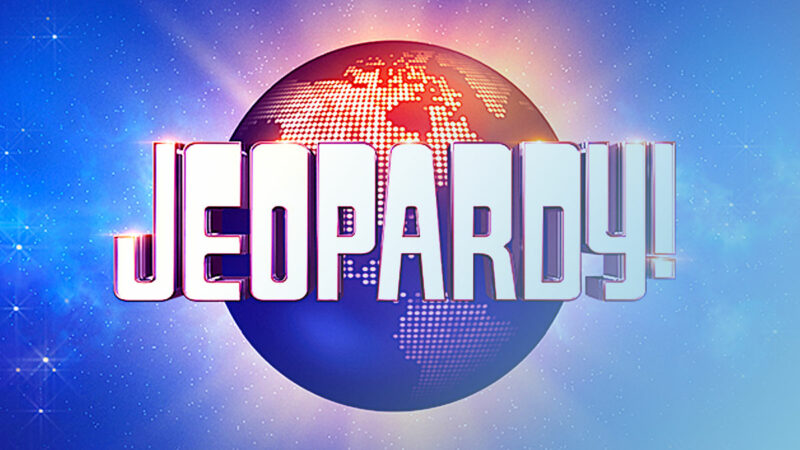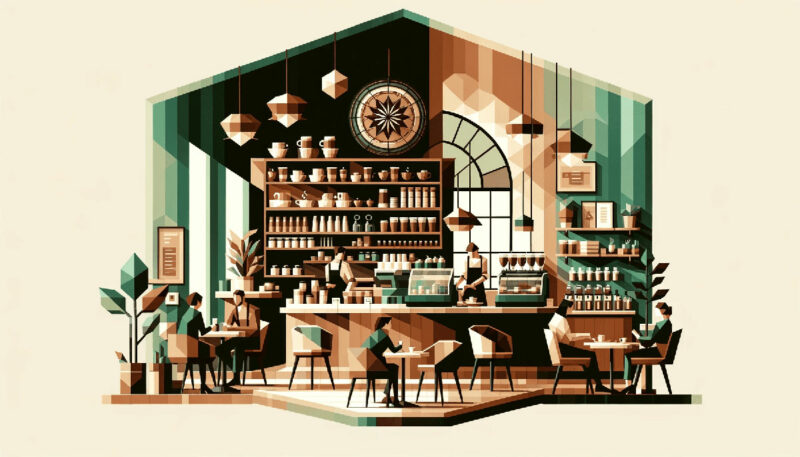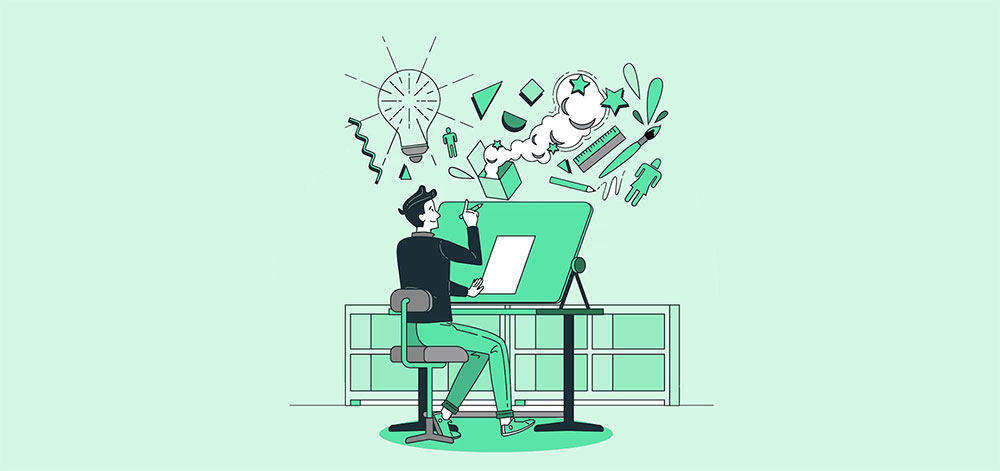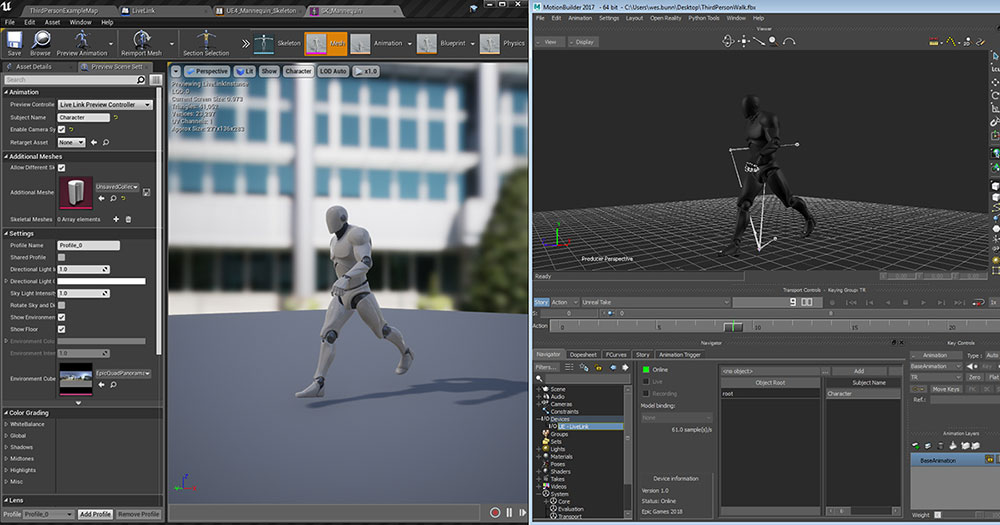UI Designer vs UX Designer: What’s the Real Difference?
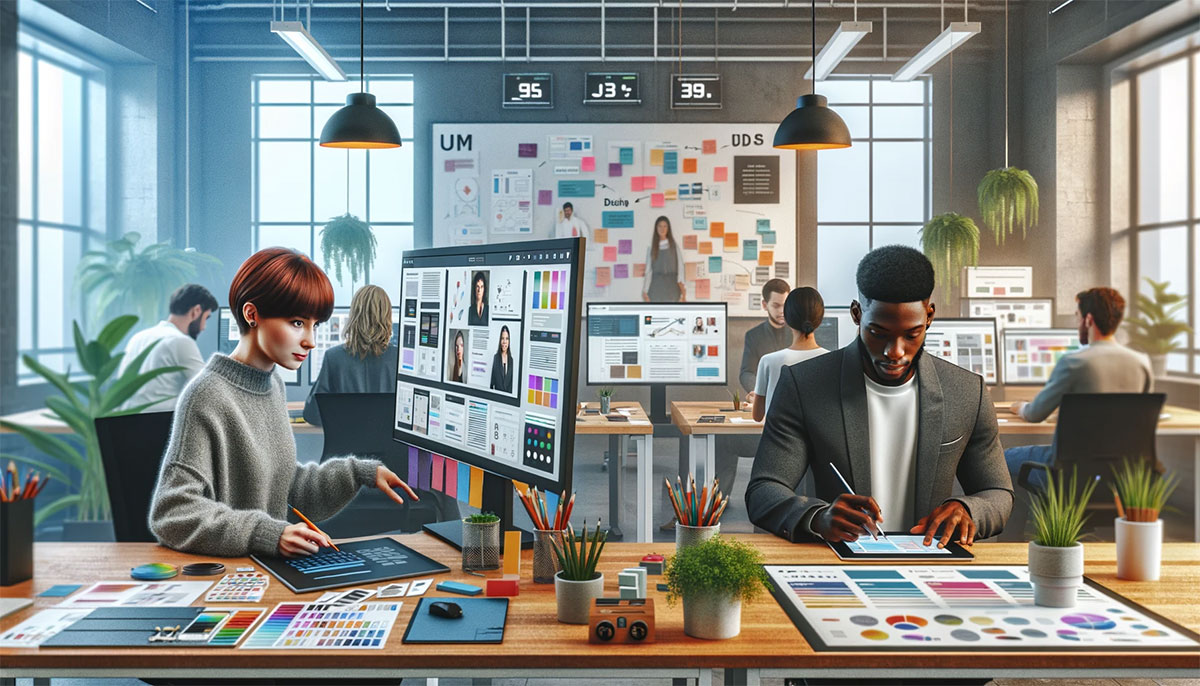
Ever find yourself staring at a digital masterpiece and wondering, who’s the wizard behind the curtain? Walk into the ever-evolving ring where UI designer squares off against UX designer. Two pivotal roles, yet often shrouded in mystery, even amongst savvy tech crowds.
UI (User Interface) design and UX (User Experience) design: they’re the power duo of the digital realm. But confusion’s the norm when slicing through the intricate dance they perform.
Listen, knowing the difference isn’t just industry jargon gymnastics; it’s about grasping the essence of how we interact with the digital world.
By the time you’ve devoured this article, you’ll transform from bystander to connoisseur. You’ll get why every pixel counts in UI’s visual design, and how UX’s usability testing impacts every click.
Together, they shape the journey from eye-pleasing layouts to the overall human-computer interaction and the emotional connection that seals the deal.
Dive in, as we explore the distinct pulse of each role, the design thinking that drives them, and why your digital experiences feel intuitive or irritatingly inscrutable.

The Basics of UX Design
Definition and Overview
Man, when I first dipped my toes into the design world, there was this buzzword everyone kept throwing around: UX design.
Took me a hot minute to really get what it was all about.
Origin and evolution of UX design
So, there’s a cool backstory here. UX stands for User Experience. Now, it sounds kinda futuristic, but truth is, it’s been there since the first dude decided to invent something for another dude to use. Imagine cavemen, right?
One guy makes a tool and realizes that if he tweaks the handle a bit, his buddy would have an easier time using it. Well, there you go, that’s UX in the stone ages.
Fast forward to today: computers, apps, websites – basically, anything digital. The whole idea of UX design has been to evolve these products so they feel natural, intuitive, and just plain friendly. No more banging the PC screen or throwing the phone across the room. It’s all about making digital spaces more human.
Key principles of UX design
Now, let’s dive into some core stuff. There are some golden rules when it comes to UX:
- Empathy is king. Always put yourself in the user’s shoes. Feel their pain, celebrate their joys. Design for them, not for the awards shelf.
- Simplicity rocks. Nobody likes confusing mazes. Whether it’s a website or an app, keeping things simple and straightforward wins hearts.
- Feedback is a gift. Always let your users know what’s happening. Loading icon, success message, error popup – these tiny bits guide the user.
Every time someone talks about “UI designer vs UX designer”, I feel this itch to jump in and explain how they intertwine and diverge.
But first, let’s dive deeper into the role of a UX designer.
Role of a UX Designer
Understanding the customer journey
Okay, imagine going on a road trip. You’ve got your map, your snacks, and a killer playlist. A UX designer’s job? Being the ultimate road trip planner.
They gotta figure out where the user starts, where they wanna go, and make sure they get there smoothly. No flat tires, no wrong turns. Just a cool ride with a view.
Research and strategy
Here’s where the detective cap comes on. A UX designer goes Sherlock mode, investigating what the user wants and needs. Surveys, interviews, stealthy observations – whatever it takes to gather the gold: info.
Armed with this knowledge that came from the UX research, it’s strategy time. Designers brainstorm, sketch, and plot how to translate these insights into a killer design.
Wireframing and prototyping
Remember those cool sketchpads we had as kids? Think of wireframing like that. It’s the blueprint of the digital product. Just simple sketches showing where stuff goes.
Then comes prototyping. It’s like turning those 2D sketches into 3D models. Interactive, clickable, almost-real versions of the final product.
The kind of stuff you can play with before it’s even built.
Testing and analysis
Alright, you’ve made this awesome prototype, but now what? Throw it into the wild! Let real users test it, poke it, and give feedback.
This stage is crucial. Sometimes, what seems cool in theory isn’t that fab in reality. So, tweak, test, repeat.
Importance of UX Design
Impact on user satisfaction
Ever walked out of a store super happy with the service? That’s the vibe a well-crafted UX gives. Users feel understood, valued, and, most importantly, not lost.
A seamless experience makes users come back for more. That’s loyalty right there.
Influence on product success
Listen up. No matter how flashy or trendy something looks, if it’s a pain to use, it’s gonna crash and burn.
Think about all those apps you’ve deleted or websites you’ve never revisited. Why? Bad UX.
A stellar UX is often the unsung hero behind a product’s success. The smoother the journey, the brighter the stars in those reviews.
Delving into UI Design
Alright, let’s kick it up a notch. I’m often at a party, and someone goes, “Oh, you’re a web designer? Cool. What’s the deal with UI?” Man, where do I start?
Definition and Overview
The visual elements of UI design

UI is like the outfit of the digital world. It’s all about the visuals. You know that sleek app you can’t stop using?
The icons, buttons, colors – that’s the magic of UI. Ever seen a killer pair of sneakers and thought, “I NEED those!”? That’s what a UI designer wants you to feel about an app or website.
From fonts that make you feel all warm and fuzzy, to vibrant color schemes that light up your day, it’s the job of UI to make the digital space look stunning. Not just stunning, but also functional.
How UI complements UX
Okay, let’s get one thing straight – while UX is about the journey, UI is about the ride’s aesthetics.
Think of it like a car. UX is making sure it drives smoothly, no bumps or hitches. UI, on the other hand, is making sure it’s the sleekest, hottest car on the block.
When people keep debating “UI designer vs UX designer”, here’s the thing: one crafts the journey, the other makes sure you’re traveling in style.
Role of a UI Designer
Transforming wireframes into graphical interfaces
Imagine a skeleton. Creepy, I know, but bear with me. Now, think of that skeleton getting flesh, skin, and a fabulous wardrobe.
That’s basically a UI designer’s role. They take the wireframe, which is the barebones of a design, and make it pop, dazzle, and wow!
Design research and visual design
Design isn’t about blindly picking pretty colors. There’s a science to it.
UI designers dig deep, understanding the latest trends, what users dig, and then craft something that’s both trendy and timeless. It’s about creating a digital space where users feel like, “This is MY place”.
Branding and graphic development
Brands aren’t just logos. They’re stories, vibes, and feelings. A UI designer ensures that the brand’s essence is sprinkled all over the design.
Whether it’s a nostalgic vintage feel or a futuristic vibe, every pixel tells a story.
Responsiveness and interactivity
Ever tapped a button and felt a tiny buzz or saw a cool animation? That’s UI making sure you’re engaged and having fun.
It’s not just about looking good; it’s about feeling alive and dynamic.
Importance of UI Design
Creating an emotional connection with users
Emotions, man. That’s the game. A dope UI design makes a user feel things. Joy, excitement, curiosity. When a user connects emotionally, they’re hooked.
Enhancing product usability
Look, no one wants to use something that feels like it was made in the dark ages. UI ensures the digital space isn’t just usable but a joy to interact with.
Every button placement, every color choice, is all about making the user’s life a tad bit easier and a whole lot more fun.
UX vs. UI: The Key Differences
So, you’ve stumbled upon the age-old debate, huh? The whole “UI designer vs UX designer” thing. Let’s break it down, shall we?
Focus Areas
UX’s emphasis on user journey
Imagine you’re on a road trip. UX is like the route you take, the pit stops you make, and the snacks you munch on. It’s all about how you feel from start to finish.
The detours, the smooth highways, and the bumpy roads – that’s UX in a nutshell.
UI’s emphasis on visual elements
Now, while you’re on that road trip, UI is your car’s dashboard, its color, the seat’s material, and the sick playlist you have on.
It’s how everything looks and feels under your fingers and in front of your eyes.
Analogies to Understand the Differences
The house analogy
Think of a house. UX is the foundation, the layout of the rooms, and the functionality of each space.
It ensures you don’t bump into walls and that there’s a logical flow from the kitchen to the dining room.
UI, on the other hand, is the color of the walls, the art pieces hanging, and the cozy rug under your feet. It’s what makes the house a home.
Other popular analogies
- Bike Ride: UX is the path you take, and UI is the bike you ride. From its color to the comfort of the seat.
- Concert: UX is the artist’s setlist and the acoustics of the venue. UI is the stage design, lights, and pyrotechnics.
The Ongoing Debate
The changing definitions of UX and UI
Back in the day, the line between UI and UX was pretty clear-cut. But now? The digital world’s ever-changing, and so are the roles of UI and UX designers.
As our digital experiences get more complex, the “UI designer vs UX designer” debate gets murkier.
The importance of both in product design
Here’s the real tea. You can’t have one without the other. It’s like having a PB without the J. Both UX and UI are crucial to make any digital product feel right.
How UX and UI Work Together
The Interdependence of UX and UI
The need for both for a successful product
I can’t stress this enough – you need both.
It’s like trying to win a race with only one shoe on. Sure, you can hop your way to the finish line, but wouldn’t it be smoother with both shoes?
Real-world examples of their collaboration
Ever used Spotify? The ease with which you find a playlist (that’s UX) and the dope album art and animations (that’s UI) make it a go-to app for many.
Another gem? Airbnb. The intuitive way to find a listing paired with the beautiful interface? Chef’s kiss.
Challenges in Integrating UX and UI
Potential conflicts and resolutions
Alright, it’s not always rainbows and butterflies. Sometimes, what looks good (UI) might not feel right (UX).
Like, a button could be super flashy, but if it’s placed in a weird spot, users might miss it. The trick is constant communication between the UX and UI folks.
Best practices for seamless integration
- Collaborate early and often: Don’t wait for issues to crop up. UI and UX designers should be BFFs from the get-go.
- Feedback is gold: Regular testing with real users can help pinpoint where UI and UX aren’t playing nice.
- Stay updated: The digital landscape’s always shifting. Both UI and UX peeps need to keep learning and evolving.
The Role of Research in UX/UI Design
Importance of Research
Gathering insights about user needs
Alright, picture this. You’re throwing a big bash for your pals, and you’ve got no clue what snacks they’re into these days.
Sure, you can wing it and buy whatever, but what if they’re all secretly on a kale-chip craze? You’d be the hero with those green crisps!
The same logic applies here. When I’m designing, it’s essential to dive deep into the world of my users.
Find out their needs, their quirks, and what they’re vibing with. It’s like being a detective but in the digital world.
Informing design decisions
Ever heard the phrase “data-driven decisions”? It’s a fancy way of saying “making choices based on legit info”.
By understanding what users are into, I can craft designs that are on point. No more shooting in the dark or hoping for the best.
Research in UX Design
User personas and interviews
Think of this as crafting character sheets for a role-playing game. Each persona represents a type of user.
And by chatting with actual peeps, I get a feel of who I’m designing for. It’s like putting a face to a name, y’know?
Focus groups and surveys
This is where it gets juicy. Hosting a mini pow-wow with potential users and picking their brains?
Priceless.
Or sending out surveys and collecting all that golden feedback? Absolute treasure trove.
Research in UI Design
Competitor benchmarking
A bit of healthy competition never hurt anyone. Peeking at what competitors are doing is like checking out their party before throwing your own.
See what’s rocking, what’s flopping, and then make your gig ten times better.
Understanding user expectations
Users come with a set of expectations, kinda like going to a rock concert and expecting head-banging music.
You wouldn’t play a lullaby there, right? So, when designing, it’s about ensuring everything’s in tune with what users are expecting.
Specializing in UX or UI
The Debate on Specialization
The need for a well-rounded understanding
It’s like being a jack of all trades. Sure, you can be the master of one, but having a broad understanding?
That’s gold.
With the constant “ui designer vs ux designer” chat, it’s clear that both have their merits. But imagine being a wizard at both? Power move!
The changing landscape of design roles
Gone are the days when you could just be “a designer”. Now, it’s all “I’m a UX ninja” or “UI guru”.
The roles are evolving, and it’s crucial to keep up, else you might just end up being the last dino in a digital world.
Tips for Aspiring Designers
Learning resources and recommendations
Alright, buds. Wanna dive deep into this world? There are tons of online courses, workshops, and even good ol’ books to get you started.
Platforms like Udemy, Coursera, or even some YouTube channels are packed with knowledge. Dive in!
The value of hands-on experience
Nothing beats the real deal. It’s like learning to swim. You can read all about techniques, but you gotta dive into the water to truly get it.
So, intern, work on mock projects, or even offer to help out local businesses. Get your hands dirty, metaphorically, of course!
FAQ On UI Designer Vs UX Designer
What exactly is a UI Designer?
A UI Designer? Think master artist, but for digital canvases, yeah? They conjure those eye-candy interfaces—color theory, typography, and button styles.
It’s all about creating that perfect aesthetic appeal, making sure every element on the screen is visually stimulating and on-brand.
How does UX design differ from UI design?
Imagine UX design as the architect of feeling. It’s not just what you see; it’s the whole shebang.
From the moment you embark on a digital journey, UX is about that emotional connection, ensuring an experience that’s not only seamless but downright intuitive. A good UX feels like second nature.
Why are UX research methods important?
Listen up; UX research is the not-so-secret sauce. It arms designers with user scenario insights and behavior patterns, brewing up designs that resonate with real, living, breathing folks.
It’s what prevents us from designing for ourselves, and instead, crafting experiences based on genuine user needs.
Can a UI designer work on UX tasks?
Sure they can. These roles often bleed into each other, like colors in a sunset. UI designers may dip their toes into UX waters—think wireframing or user interviews.
However, be aware, the deep dive into UX demands a solid grasp of usability testing and user-centered design principles.
What tools do UI and UX designers use?
Think Figma, Sketch, Adobe XD—these are their weapons of choice, their design dojo. These tools let designers prototype, create wireframes, and test out killer user flows. They’re about bringing ideas to life and iterating on them till they’re as smooth as a well-oiled machine.
Are UI and UX design interdependent?
Absolutely. Picture them as dance partners in a tango; they complement each other like rhythm and melody. UI’s visual finesse paired with UX’s focus on the overall ride results in a digital symphony that’ll leave users wanting more.
How does one transition from graphic design to UI/UX design?
A leap from graphic design is like a painter going digital. You’ve got an eye for design—that’s great. Now get cozy with prototyping, interaction design, and understand the psychology behind user behavior.
Remember, UI/UX isn’t just pretty; it’s functional, accessible, and user-focused.
What is the key to a successful UI and UX collaboration?
Three words: communication, empathy, and user testing. The UI teams must sync with UX to create designs that are not only slick but also tell a compelling story. They need to step into the user’s shoes, test relentlessly, and tweak till the feedback sings.
Is coding a necessary skill for UI or UX designers?
Not essential but hey, it’s a winning card. Understanding the basics of front-end development can streamline the design-to-development handoff. Speaking the dev lingo means designs are realistic, feasible, and you become the bridge between worlds – a digital polyglot in a way.
How do UI and UX design impact a business’s bottom line?
Bottom line? Good UI/UX design equals happy customers, and happy customers mean repeat business and glowing referrals.
It’s the secret spice in a brand’s recipe for success—ensuring your product doesn’t just work but delights and retains those users. So, it is, indeed, a business game-changer.
Conclusion
Time to wrap this up, pulling back the stage curtain on our UI designer vs UX designer showcase. We’ve untangled the vibrant threads woven by the crafters of the digital experience. Yeah, that’s right, the visual virtuosos and the architects of interaction.
- UI Design, it’s the surface, where pixels meet the eyes. A realm ruled by visual design principles, color schemes, and typography that pops. It’s here, beauty isn’t just skin deep—it’s interactive.
- UX Design, though, is the backbone. It’s the research-driven, user-centric strategy that defines the journey. With empathy as a compass, it paves the digital road smooth.
So, when that next project lands on the desk, remember, a stunning interface is just part of the story. Sure, UI makes them look, but UX, oh, it makes them stay. Together, they’re the yin and yang, the bread and butter. And that, friends, is the kind of harmony that leads to legendary digital experiences—ones that feel like home.
If you liked this article about UI designers vs UX designers, you should check out this article about UX designers vs data analysts.
There are also similar articles discussing UI designer vs graphic designer, UI designer vs UI developer, web designer vs web developer, and web designer vs UX designer.
And let’s not forget about articles on web designer vs front end developer, web designer vs UI designer, graphic designer vs graphic artist, and graphic designer vs UX designer.
- Game Show Typography: What Font Does Jeopardy Use? - 9 May 2024
- The Carlsberg Logo History, Colors, Font, And Meaning - 8 May 2024
- Brewed to Perfection: Coffee Color Palettes for Warm Designs - 8 May 2024


